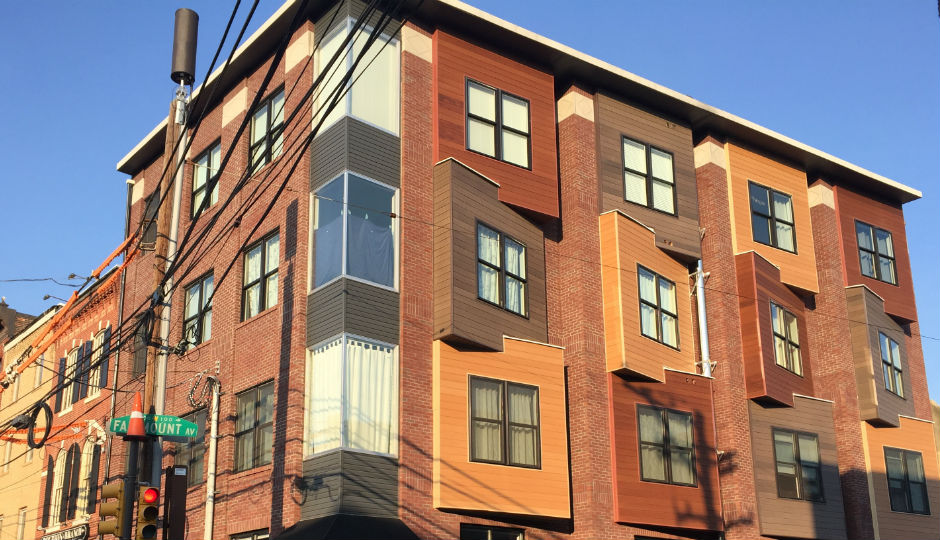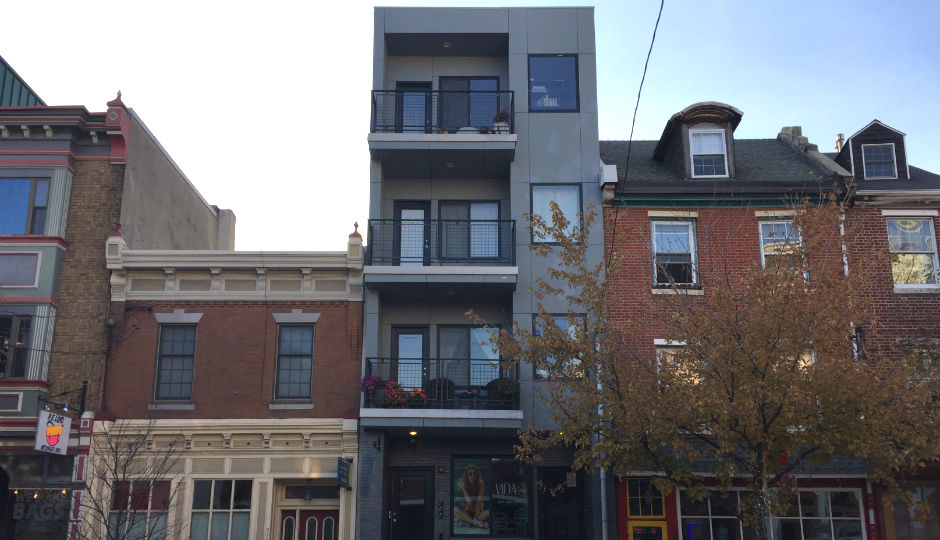The Very Slow, All-of-a-Sudden Transformation of Northern Liberties

2nd and Fairmount | Photo by Jared Brey
Three and a half years ago, this magazine published a list of Hot Neighborhoods, in which Northern Liberties was described as a place that was “Not just for artists anymore.”
To make sense of that description, you have to accept a few assumptions. The first is that an “artist,” in this usage, is anyone who makes a decent-enough living doing something either creative or blue collar, and who lives outside of Center City both by necessity, because they can’t afford the rent, and by preference, because the outlying neighborhood has some aesthetic or historical character that appeals to the artist’s self-image. The second thing you have to accept is that Northern Liberties was once a place that appealed primarily to those types. The third is that its appeal had broadened. If we were to remake that list today, we could probably shorten the description. Northern Liberties: Not for artists anymore.
“A lot of how I think about Northern Liberties is joy,” says longtime resident and community leader Matt Ruben. “But a lot of it is coming to terms with grief over what we’ve lost.”
It was Tuesday night. Ruben, who’s been president of the Northern Liberties Neighbors Association (NLNA) for 12 of the last 14 years, had just helped unveil plans for a revamped outdoor community space in the back yard of the community center at 3rd and Fairmount, where the association holds its meetings. The new space, a shaded, landscaped pavilion, is a kind of gift from the association to the public and to itself on the occasion of the group’s 40th birthday. And it’s a small symbol of the good will that the organization has stored up since it became the civic voice of the neighborhood in the 1970s.
The construction is being paid for by the Penn Treaty Special Services District, a grantmaking organization that was established in 2009 through an agreement with SugarHouse Casino. The space was designed, on a pro bono basis, by a small army of architects, landscape designers, engineers, consultants and lawyers who have dealt with NLNA in some capacity or another over the years. And the last 15 years have been particularly frenetic ones for the association, while the neighborhood, probably more than any other in Philadelphia, has withstood a sustained onslaught of demolition, development, and gentrification.
“When I moved into the neighborhood in 2000, the Census came out at that time, and the population had dwindled from a mid-century high of 17,000 down to 3,500,” Ruben told me after the ceremony. “Total dis-population. And now it’s about 8,000, so, meteoric growth. … The increase in the number of people, the increase in the number of buildings, the increase in the number of businesses, the change from old abandoned buildings and vacant lots to used, occupied buildings — all of these changes are obvious to anyone who was here then and who comes back now. In fact, ‘obvious’ understates it. They are stunning, and will leave you agape.”

Northern Liberties Community Center Pavilion | KieranTimberlake Associates
THE PACE AT WHICH the physical landscape of Northern Liberties is changing is, in fact, stunning. Before I met Ruben on Tuesday, I took an hourlong walk through the neighborhood, craning my neck on every block to take in newly built houses and apartment buildings. Every new project seems to raise the average height of the neighborhood by an inch or two. There’s raw timber and green housewrap everywhere, as though whole swaths of the neighborhood were just dropped off from Home Depot. I used to live nearby, and I have spent quite a bit of time in the neighborhood, but I can’t go there now without experiencing some kind of deeply clichéd but totally involuntary gee-whiz sensation at how much of the environment is new. A friend of mine who lives near 4th and Brown recently took a trip to Japan, and told me that he had the same experience when he got home. After 11 days.
Northern Liberties was in many ways uniquely poised for the kind of transformation it’s now living through. An inheritance of obsolete industrial buildings left the neighborhood with a huge amount of unused land in the late 20th century. It had historic character, as one of the first suburbs of Philadelphia, and a strong housing stock. And when the revival of Center City began to take hold, Northern Liberties was just one more stop down the Market-Frankford Line.
It’s different from what happened in Queen Village or Fairmount, Ruben pointed out. In those places, neighborhoods just outside the downtown core that became appealing to wealthier people somewhat earlier, new development was more or less in keeping with the scale of the housing that already existed there. The gentrification of Northern Liberties has coincided with a push toward bigger urban homes, and the advent of the urban McMansion, which makes the traditional, century-old Philly rowhouse look like a miniature.
From an aesthetic perspective, that works out better in a place like Northern Liberties than it does in, for example, Point Breeze. The houses in South Philly tend to be more uniform, developed in many cases all at once in two- or three-story rows. But the collection of architecture in Northern Liberties was plenty weird and eclectic before the gentrification really got underway. Contemporary homes that would stick out like ugly thumbs in many other places work a bit better here, because the context is less monolithic. (Though, for the record, the urban McMansion is not a positive addition to any neighborhood.)
“When I first moved here, I saw developmental change as a threat,” Ruben said. “And I saw larger residences as something that was disruptive of the community fabric. And when not done well, any development is disruptive. But I’ve very strongly come around to the view that what a neighborhood like Northern Liberties and many urban neighborhoods need is mixed-use, mid-rise construction, with commercial on the first floor and residential apartments above. Businesses don’t survive without a density of residences. Urban neighborhoods are safer when there’s more people living in them.”

N. 2nd Street | Photo by Jared Brey
NORTHERN LIBERTIES HAS GAINED PEOPLE, businesses, and a variety of buildings. What has it lost? Some breweries, for one. And other historic architecture is under threat: Right now, the neighborhood is fighting to protect a row of 1820s-era houses on Fairmount Avenue, close to the river.
It’s lost some diversity, too. The black and Hispanic populations in Northern Liberties have shrunk significantly since 2000, according to a recent report on gentrification from the Pew Philadelphia Research Initiative, while the white populations grew and the median income increased by 50 to 80 percent. (Though it was much more diverse, it hadn’t been a majority-black neighborhood in the late 20th century, which may be another reason why it has transformed so quickly in recent years. Some Harvard University researchers have identified “white avoidance” as a kind of corollary to white flight, showing that working-class white neighborhoods are quicker to gentrify than ones that are occupied mostly by black or Hispanic communities.)
It’s also lost pretty much any pocket of affordability.
“It does bother me that the infill has been almost uniformly market-rate, affluent, and that’s a larger affordability problem in Philadelphia,” Ruben said. “My only consolation is that I kind of view Northern Liberties and Fishtown and South Kensington and East Kensington as a sort of mini-region. And I feel like there’s a real chance for affordability — not in Fishtown, but in South Kensington and maybe East Kensington.”
I asked Ruben what he thought Northern Liberties would be like in another 40 years. The upheaval in the area has made him hesitant to make those kinds of predictions, but he told me what he’d like to see. Bustling commercial corridors on 2nd Street, Spring Garden, and Girard Avenue, he said, without any commercial vacancies. No empty lots that aren’t preserved as parks or green space. More people but fewer vehicles, with the population taking advantage of better mass transit, or better bike infrastructure, or some technological transportation innovations that haven’t been conceived yet. Narrower streets and wider sidewalks. Stormwater management and urban irrigation built into the streets and sidewalks, with vegetation everywhere.
“And I’d love to see a neighborhood that has significantly more people even than we have now, but still maintains the village feel and the tight-knit nature of the community, where everyone’s one degree of separation and everybody knows what everyone else is doing.”
Follow @jaredbrey on Twitter.